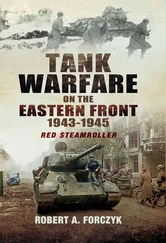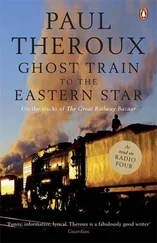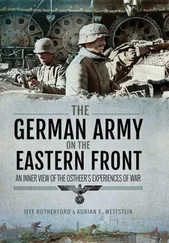As a former tanker myself, commanding M60A3 TTS tanks in the U.S. Army in the Republic of Korea in the mid-1980s, I have an appreciation for how logistics, terrain and weather can affect armour operations and how seemingly minor deficiencies can have major consequences. Having felt the terror of sliding uncontrollably in a tank on an icy downgrade, or the difficulty of recovering tanks mired in deep mud, or fording a boulder-strewn river, I intend to offer an account of tank warfare that encompasses the oft-ignored, but critical, facets of armoured operations that have frequently been missing from other accounts.
Adolf Hitler intended to crush the Soviet Union and its inimical Communist ideology in one, swift campaign, using his battle-tested panzer divisions and Luftwaffe air fleets as his weapons of choice. In Führer Directive 21, issued on 18 December 1940, Hitler stated that, ‘the bulk of the Russian Army in Western Russia will be destroyed by daring operations led by deeply penetrating armoured spearheads.’ [1]He deliberately chose to unleash a war of annihilation aimed not only at the destruction of the Red Army and Soviet state, but also at the eventual obliteration of the indigenous Slavic populations as a necessary precursor to German colonization in the East. Whereas previous operations in Poland, France and the Balkans had followed the methods of traditional German campaigning, Hitler intended Operation Barbarossa to be a crusade. Yet oddly, Hitler’s grand strategic vision for the War in the East was not matched by sound strategic-level planning. Instead, the War in the East would be conducted primarily on the operational and even tactical levels, often on the basis of ad hoc or opportunistic decision-making, rather than sober assessment of ends and means.
The employment of Germany’s armoured forces in the Soviet Union was shaped by three strategic assumptions made by Hitler and the Oberkommando der Heer (OKH). The first assumption was that the war in the Soviet Union would be a short campaign, resolved in a matter of a few months. Germany made no preparations for a protracted War in the East, including increasing tank production or training replacements, or stockpiling fuel and ammunition. The second German strategic assumption was that terrain and weather would have no significant impact on the conduct of the campaign. Hitler and the OKH regarded the Soviet Union as virtually flat, table-top steppe land that was perfect for rapid panzer operations, but ignored its numerous rivers, dense forests, immense distances and poor road networks. Previous German panzer operations had achieved victories after moving only 300–400km in fair weather over good roads. Indeed, no offensive in German military history had ever covered more than 500km in a single push. Since the first assumption of a short war expected a Soviet collapse well before the onset of the Russian winter, Hitler and the OKH completely disregarded the weather as a factor. The third strategic assumption was that the Red Army could be quickly and efficiently destroyed.
Based on a combination of factors – the poor showing by the Red Army in the Russo-Finnish War, Stalin’s purges of the officer corps and incomplete OKH intelligence assessments – Hitler and the OKH reckoned that they could destroy the best part of the Red Army in about six weeks of fast-moving campaigning. With the bulk of the Red Army smashed, including its tank forces, Hitler believed that the Soviet state would suffer a moral collapse akin to what happened in France in June 1940. These three strategic assumptions had a profound impact on German panzer operations in the Soviet Union and when each proved false in turn, they put the panzer divisions at a permanent disadvantage.
Stalin’s immediate objective in mid-1941 was to deter German aggression until the Red Army was sufficiently prepared for him to take a more assertive tack with Hitler. He had foolishly ordered the disbanding of the Red Army’s four existing tank corps in November 1939, only to order them re-formed as mechanized corps in July 1940 and their number doubled in response to the spectacular German victory over France. In order to give Soviet military power credibility in the eyes of Germany, Stalin also directed that the mechanized corps would be reequipped with the new T-34 and KV-1 tanks to replace the lighter T-26 and BT-series models. Soviet industry was ordered to produce over 5,000 of the new tanks and the mechanized corps were expected to be fully-equipped by mid-1942. However, Stalin became increasingly alarmed by reports that Germany was creating more panzer divisions, so in February 1941 he directed that twenty additional mechanized corps – requiring another 11,000 tanks – should be formed as quickly as possible. Even with the Stalingrad Tractor Plant (STZ) joining the Kharkov Plant (KhPZ) to produce T-34 tanks, it was unlikely that these twenty-eight mechanized corps could be fully-equipped before late 1943. Given these arbitrary changes in organization imposed by Stalin, the Red Army’s twenty-eight mechanized corps were only partly equipped and in a state of fatal disarray in June 1941.
The deployment and employment of the Red Army’s mechanized forces was based on three strategic assumptions made by Stalin and his General Staff. First, Stalin believed that there would be adequate early warning prior to any German aggression, giving Red Army units time to prepare and deploy for combat. Due to this assumption, Red Army leaders felt that they could defer measures to enhance combat readiness in favor of other organizational priorities. The second Soviet strategic assumption was that with adequate logistics, training and preparation, the Red Army could hold its own against the Wehrmacht. Tied to this assumption was an implicit belief that enemy incursions could be limited to the buffer zones in Poland and Lithuania acquired in 1939–40. The third Soviet strategic assumption was that industrial mobilization was the key to victory and that campaigns would be decided by the side that had the greater ability to sustain its forces in protracted operations, not by fancy maneuvers. Due to Stalin’s ineptitude, the first Soviet strategic assumption was invalidated and undermined the validity of the second assumption as well. The cost of Stalin’s strategic miscalculations was the loss of the bulk of the pre-war Soviet tank force in the first three months of the campaign. However, the third Soviet strategic assumption proved entirely correct and eventually provided the means for the second assumption to regain saliency by the second year of the war. In short, despite certain blindness to impending war, Stalin and the Soviet General Staff did a far better job laying the groundwork for protracted operations than the Germans, and this strategic calculus would provide the Red Army’s tank forces with a valuable counterweight to the tactical skill of German panzer units. The Soviet numerical superiority in tanks for much of the War in the East – much bemoaned by German veterans – was not some sleight of hand trick, but the result of careful pre-war planning.
Hitler deployed four panzer groups with a total of seventeen panzer divisions and 3,106 tanks [2]for Operation Barbarossa, the invasion of the Soviet Union. In addition, two independent panzer battalions, Pz.Abt. 40 and Pz.Abt. 211, were deployed in Finland with 124 tanks (incl. twenty Pz.III). The 2 and 5.Panzer-Divisionen were refitting in Germany after the Greek Campaign in April 1941 and were in OKH reserve. Otherwise, the only other extant panzer units were the 15.Panzer-Division with Generalleutnant Erwin Rommel in Libya and two panzer brigades in France. No other panzer units were in the process of forming in Germany. Consequently, the OKH was committing virtually all of the available German panzer forces to Barbarossa, with negligible reserves and limited monthly production output to replace losses. In mid-1941, German industry was producing an average of 250 tanks per month, half of which were the Pz.III medium tank. Combat experience in France and Belgium in 1940 indicated that the Germans could expect to lose about one-third of their medium tanks even in a short six-week campaign, which Hitler regarded as acceptable losses. Furthermore, German industry had no tanks beyond the Pz.III or Pz.IV in advance development. The Heereswaffenamt (Army Weapons Office) only authorized Henschel and Porsche to begin working on prototypes for a new heavy tank four weeks before Operation Barbarossa began, and this program had no special priority until after the first encounters with the Soviet T-34 and KV-1 tanks in combat.
Читать дальше







![John Stieber - Against the Odds - Survival on the Russian Front 1944-1945 [2nd Edition]](/books/405234/john-stieber-against-the-odds-survival-on-the-russian-front-1944-1945-2nd-edition-thumb.webp)




